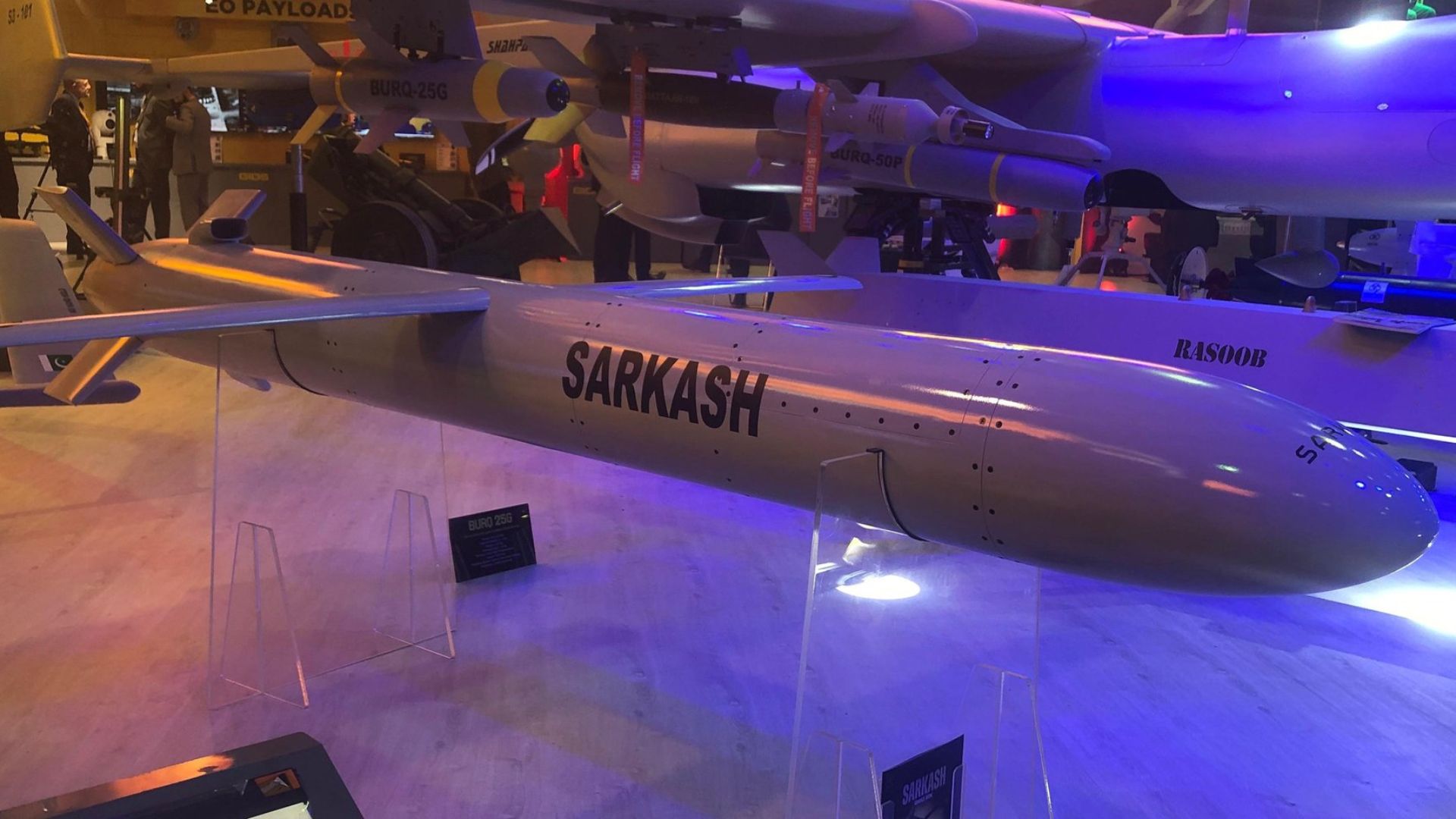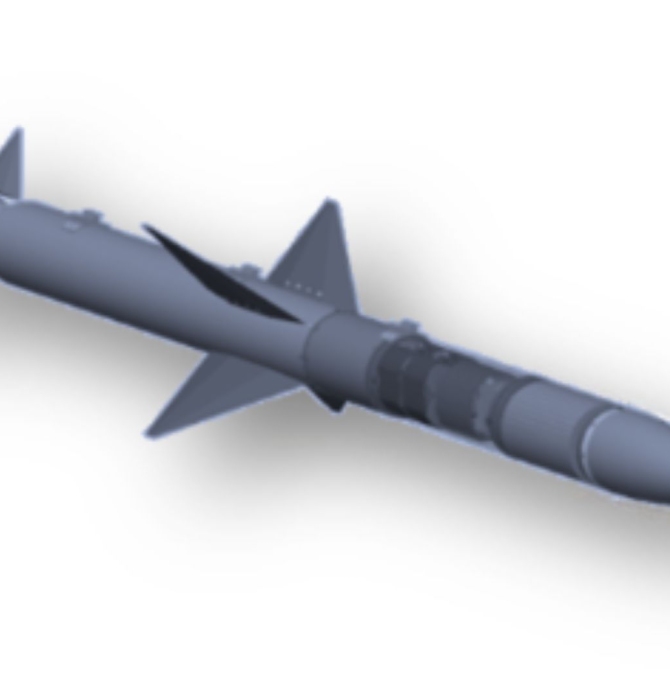7088Views

GIDS Sarkash-I (or Sarfarosh) Loitering Munition/Cruise Missile
Global Industrial Defence Solutions (GIDS) first revealed the Sarkash-I loitering munition/cruise missile at the 2024 International Defence Exhibition and Seminar (IDEAS 2024), a biennial tradeshow promoting the Pakistani defence industry.
The Sarkash-I was one of three new long-range munitions revealed at IDEAS 2024, alongside the Rasoob 250 air-launched cruise missile (ALCM) and the Blaze-series of loitering munitions. As with many of GIDS’ other solutions, the Sarkash-I was likely developed by a Strategic Plans Division (SPD) entity, possibly Air Weapons Complex (AWC), which is often the source of Pakistan’s conventional stand-off range weapons (SOW), such as cruise missiles and precision-guided bombs (PGB).
While GIDS describes the weapon as a ‘kamikaze drone’, the Sarkash-I’s design attributes mirror those of a cruise missile. This similarity is most obvious with the airframe’s fuselage, which uses a cylindrical Babur or Harbah-style design. A GIDS promotional video shows that the Sarkash-I’s will be foldable, allowing the missile to be carried in and deployed from a canister.
In terms of specifications, the Sarkash-I has a total mass of 175 kg while carrying a 50 kg warhead. But its stand-out feature will be its range, which GIDS says will be 1,000 km (or an endurance of 120 minutes). Its guidance suite or seeker stack were not disclosed at IDEAS 2024.
GIDS markets the Sarkash-I as a solution for use against high-value targets, such as radars and buildings.
Sarkash-I Specifications
- Range: 1,000 km
- Weight: 175 kg
- Warhead Weight: 50 kg
- Warhead Type: TBD
- Cruise Missile: TBD
- Accuracy: TBD
- Powerplant: Undisclosed turbojet (possibly NESCOM or SoluNox)
- Length: TBD
- Width: TBD
- Seeker: TBD
Key Capabilities of the Sarkash-I
Flexible Deployability Options
With a weight of 175 kg, it is clear that one of the goals of the Sarkash-I is for it to be a high-impact, but relatively lightweight weapon. While the cannisters are not man-deployable, the Sarkash-I can be loaded upon light armoured vehicles (LAV) or even lightweight logistics vehicles, like pick-up trucks.
This flexibility can enable Pakistan to deploy a long-range strike element fairly close to the border, and – potentially – do it with substantially less risk of exposure or detection. It could also move the Sarkash-I units to various locations quickly as well as, technically, a basic vehicle could manage them.
Range
A range of 1,000 km is relatively long for a weapon of this size and weight. While the designers got this range by trading away the warhead weight, the ability to ferry a munition load so far is still of value. One intended use-case of the Sarkash-I is for use against radars, which are sensitive systems which will be susceptible to severe damage, if not outright destruction, to a 50 kg warhead.
Autonomous Capabilities (?)
While GIDS did not explicitly mention this capability, another SPD-backed entity – Qaswa Industries – is working on a munition with autonomous target identification and engagement capabilities (AZB-81LR).
It is possible that the learnings of this munition could be fed to the Sarkash-I and Rasoob 250, allowing both to operate with relatively limited user-input. This would be important in the near future as South Asia grows in electronic warfare (EW) density. The widespread use of communications jammers and GNSS or GPS denial systems could require these new munitions to function indepentently.
Qaswa Industries stated that it was leveraging artificial intelligence and machine learning (AI/ML) to give the AZB-81LR the ability to conduct swarm maneuvers as well.
Sarkash-I News Updates, Comments, and Analysis
The Pakistani military will likely treat the Sarkash-I as more of a cruise missile akin to the Babur-series or Ra’ad/Taimoor-series than a loitering munition. While relatively low-cost and expendable, the Sarkash-I is unlikely to be produced with enough scale to be Pakistan’s loitering munition workhorse…
Access the latest updates on the Sarkash-I by joining Quwa Premium
Already a Quwa Premium member? Log in below!
Note: Logged in members may need to refresh the article page to see the article.


